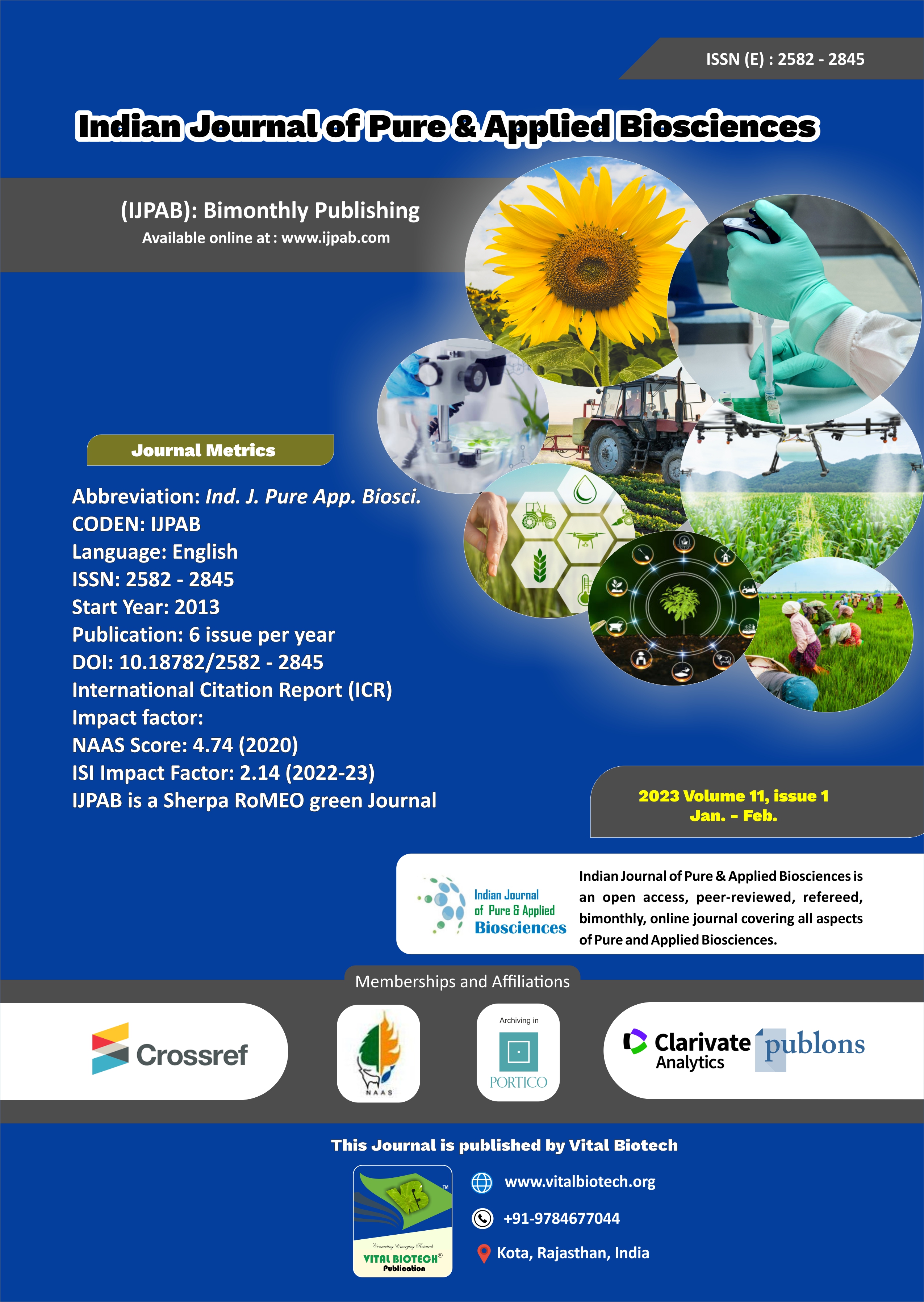-
No. 772, Basant Vihar, Kota
Rajasthan-324009 India
-
Call Us On
+91 9784677044
-
Mail Us @
editor@ijpab.com
Indian Journal of Pure & Applied Biosciences (IJPAB)
Year : 2023, Volume : 11, Issue : 1
First page : (14) Last page : (22)
Article doi: : http://dx.doi.org/10.18782/2582-2845.8970
Characterization and Determination of Aflatoxigenic and Non-aflatoxigenic Aspergillus flavus Isolated from Bakery Food Products from Frontier around Davangere District
Sowmya K. L.1* ![]() and Ramalingappa B.2
and Ramalingappa B.2
1Research Scholar, 2Professor,
Department of Microbiology, Davangere University, Shivagangotri, Davangere-577007, Karnataka
*Corresponding Author E-mail: swomyakl456@gmail.com
Received: 23.12.2022 | Revised: 9.02.2023 | Accepted: 17.02.2023
ABSTRACT
Mycotoxins are secondary metabolites produced by filamentous fungi in food and feed due to several conditions that affect fungal growth and mycotoxin production in different ways. Mycotoxin contamination in bakery food products is seriously dangerous to humans and animals. This study aimed to morphologically characterize and determine the aflatoxigenic and non-aflatoxigenic Aspergillus flavus isolates. Thirty three isolates of A.flavus were obtained from bakery food products collected from bakeries in rural areas like Bathi, Kodaganur, Bada, sasalu, Mayakonda, Avargere, Anaberu, Alur, Attigere, Echagatta around Davangere city. They were cultured on Potato Dextrose Agar medium (PDA), Rose Bengal Agar medium (RBA), Czapec(dox) agar medium (CZA) and Sabouraud’s dextrose agar medium (SDA). By observing the colony color and texture macromorphological characteristics were determined and micromorphological characteristics were determined by observing the spore color, size, structure, conidiophore structure, conidia, vesical shape under microscope. The production of aflatoxin was determined by UV fluorescence of isolates on coconut cream agar (CCA) medium plates. In aflatoxin detection 20 (60.60%) isolates of A.flavus shows positive results and 13 (39.39%) isolates of A.flavus shows negative results. The highest incidence of A.flavus was recorded in samples collected from Attigere followed by Bathi, Alur, Echagatta, Kodaganur, Bada, Anaberu, Sasalu, Mayakonda, Avargere. The incidence of A.flavus that produces aflatoxin highlights the necessity of taking action to eliminate their presence in food. The non-aflatoxigenic strains are being used in a biological control strategy to outcompete the aflatoxigenic ones.
Keywords: Aspergillus flavus, aflatoxin, Morphological Characterization, coconut agar medium.
Full Text : PDF; Journal doi : http://dx.doi.org/10.18782
Cite this article: Sowmya, K.L., & Ramalingappa, B. (2023). Characterization and Determination of Aflatoxigenic and Non-aflatoxigenic Aspergillus flavus Isolated from Bakery Food Products from Frontier around Davangere District, Ind. J. Pure App. Biosci.11(1), 32-42. doi: http://dx.doi.org/10.18782/2582-2845.8976


